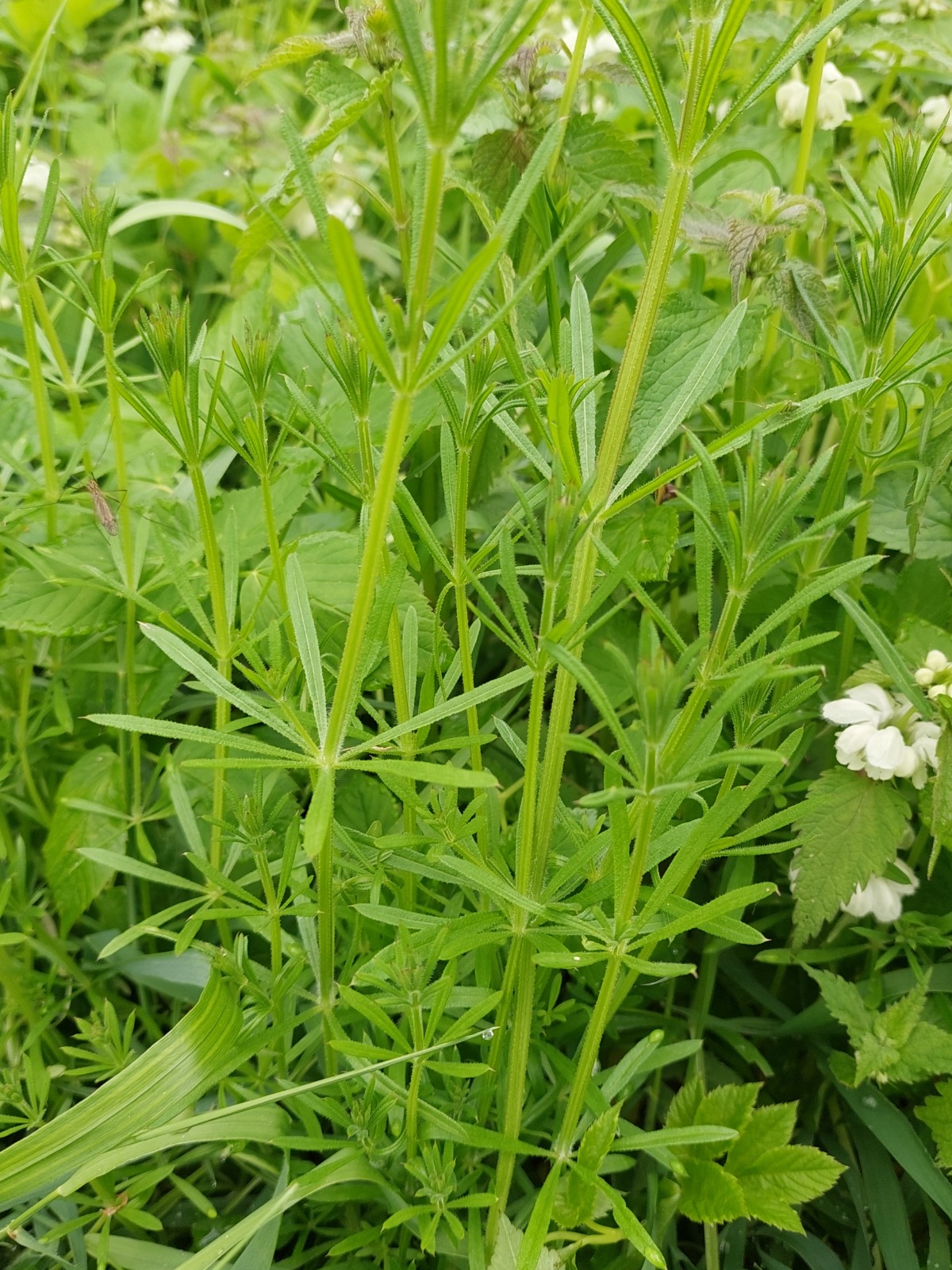CATCHWEED BEDSTRAW (‘Galium aparine’)
 © E. Bēvalde.
© E. Bēvalde.Annual, medium to large (30–110 cm) perennial herb of the ruby family. Stem decumbent or climbing. On the edges of the stem, along the edge of the leaf and on the underside of the plate, many sharp, hook-like spines. Leaves in spurs of 6 or 8, linear, broadest above the middle, tipped with a barbed tip. Flowers in dicotyledons at the top of the stem and in leaf axils, longer than the leaves. Crown greenish-white. The fruit is a nut.
Blooms from June to October.
Grows in all soils except poor sandy soils. Propagated by seeds.
The name of the plant is related to its peculiarity of grabbing everything that is near it. In the spring, after the starchy food of the winter, it is valuable to drink catchweed bedstrawtops tea (fresh plant ). It helps to cleanse the body. In ancient times, catchweed bedstraw seeds were dried and roasted and used as a substitute for coffee.

